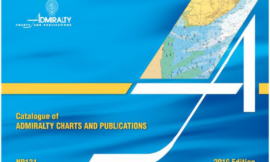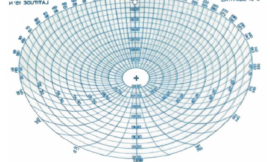Some important definitions:

Rhumb line: is a line on the earth’s surface, crossing all meridians at the same angle. It is the most convenient track to follow as the course of the ship remains constant for the entire passage.
Departure: The departure between two places is the east-west distance between them in nautical miles.
1. If the two places are on the same latitude, the departure is the distance
between them in nautical miles.
2. When the two places are in different latitudes, the departure between them is taken as the east west distance between their meridians measured along the mean latitude. This will hold good if the latitudes of both the places are fairly close to each other and this concept is used without any appreciable loss of accuracy in mean latitude problems.
3. When the latitudes of two places are widely separated, the mean latitude concept will be technically incorrect and in this case the departure is taken as the east west distance measure along the middle – latitude. Here, the middle latitude is defined as the latitude on which the true departure lies. This concept is used in middle latitude sailing calculations, which are generally discouraged for the purpose of practical navigation.
Parallel sailing calculations –
Example I:
A vessel in latitude 50N longitude 004W steers a course of 090 (T) for a distance of 90 miles. Find the position arrived.
To convert departure in to D’long or vice versa, the parallel sailing formula is used which is
Dep / D’long = Cos M’lat D’long = Dep / Cos M’lat = Dep x Sec M’lat
Since the vessel is travelling east – departure is the same as distance travelled which is 90 miles
D’long = 90 x sec 50
= 90 x 1.55 57
= 140.02’ East
= 2° 20’E
Longitude arrived = 004 ° W + (2° 20’E)
= 00400’W – 220’ = 01 40’W

7) Plane sailing calculations
Example II: Find the course and distance from
Position A : 490 35’N 004000’W to
Position B : 500 10’N 0020 55’W
Solution:

Position A 49° 35’N 004° 00’W
Position B 50° 10’N 002° 55’W
D’lat 00° 35’N D’long 1° 05’E
D’ lat = 35’N D’long =65’ E
M’ Lat = 49°52.5
Dep = D’long x cos M’lat
= 65 x cos 49° 52.5
= 41.89’
Tan course = Dep / D’lat = 41.89 / 35 =1.19686 Course = N 50° E
Distance = D’lat x sec co.
= 35 x sec 50
= 35 x 1.55 57
= 54.5 N miles

We will now work out another example on plane sailing where by the initial position, the course and distance travelled is given and we will have to find out the arrival position.
Example III:
Your vessel was in position 04°20’S 040° 50’E. She sailed on a Rhumb line course of 185° T for a distance of 260 miles. Assuming there has been no effect of wind and current, what will be your arrived position?
Distance = 260 M
Course = 185 T i.e. S05°W
D’lat = Distance x Cos course.
= 260 x cos 05
= 259.01 259’
D’lat = 259 = 4° 19.0’S
Dep Latitude : 04° 20’S
D’lat : 04 19’S
Arrived Latitude : (Add) 08° 39’S
Mean Latitude: 06° 29.5’ S
Dep = Distance x sin co = 260 x sin 05 = 22.66’
D’long = dep x sec M’lat = 22.66 x sec 06 29.5’ = 22.8’ W
Departure Longitude: 040° 50’ E
D’long: 0° 22.8’ W
Arrival longitude: 040° 27.2’ E
Position arrived: 50° 00’N, 001 ° 40’W
Course and distance:
050(T) distance 54.5’
Position Arrived:
08° 39’ S, 040° 27.2’ E
8) Calculations using traverse tables
The above examples were worked out without the use of the traverse tables. Now let us solve few examples using traverse tables:
Some notes regarding use of traverse tables:
a) Traverse tables are made for calculations for distances only up to 600 nautical miles. If the distance exceeds 600 miles, calculations are to be done by mercator sailing method.
b) All three-figure courses are to be converted into quadrantal ones for e.g. 165(T) should be converted to S15E.
c) When entering courses and mean latitudes in the traverse tables – if the value is less than 45 then the table is entered from the top of the page and if the value is more than 45 then the table is entered from the bottom of the page.
- When departure = d’lat then the course will be 45.
- When dep > d’lat then the quadrantal course is more than 45.
- When dep < d’lat then the quadrantal course is less than 45





